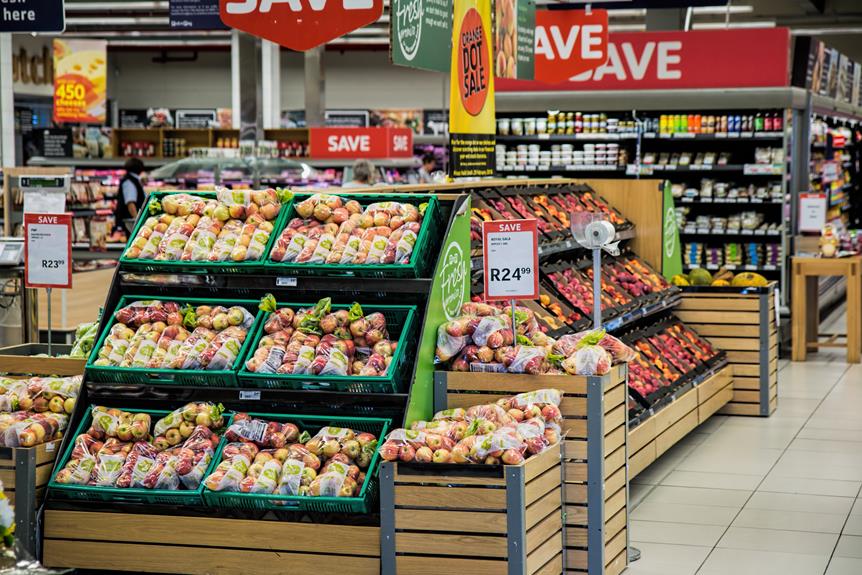Welcome to the world of B2B ecommerce, where digital transformation is reshaping the way businesses buy and sell. As we embark on this journey, we find ourselves standing at the precipice of a monumental shift in the way transactions occur.
Picture this: by 2025, a staggering 80% of B2B sales transactions will take place through digital channels. But this transformation isn't limited to traditional B2B companies; emerging technologies have made it easier for B2C businesses to enter the game as well. With the rise of B2C2B and B2B2C, the lines between business-to-business and business-to-consumer are blurring.
But what does this mean for businesses operating in this ecosystem? What opportunities and challenges lie ahead? Join us as we explore the intricacies of B2B ecommerce and uncover the secrets to success in this ever-evolving landscape.
Types of B2B Ecommerce
In the world of B2B ecommerce, there are various types of business models that cater to the unique needs and preferences of buyers and suppliers alike.
One such model is B2B2C ecommerce, which eliminates the middleman between B2B and B2C. This allows wholesalers or manufacturers to reach the final consumer by partnering with the B2B or selling directly. B2B2C transitions happen online through virtual storefronts, ecommerce sites, or apps. Consumers are aware that the product comes from a separate business, such as when they purchase a product from an affiliate blogger but receive a branded product from the manufacturer.
Another type is wholesale B2B, where goods are bought in bulk for a lower price and sold at retail value. Wholesale ecommerce provides a digital platform for wholesalers to enhance the buying experience.
Manufacturers, on the other hand, produce finished goods on a large scale and sell them to other manufacturers, suppliers, or wholesalers. They're also moving their business online to meet the rising expectations of B2B buyers.
B2B2C Ecommerce
B2B2C ecommerce revolutionizes the traditional supply chain by eliminating the middleman and allowing wholesalers or manufacturers to directly reach the final consumer. This liberating approach transforms the way businesses operate, enabling them to establish direct connections with their target audience.
Through virtual storefronts, ecommerce sites, or apps, B2B2C transitions happen seamlessly online. Consumers are fully aware that the products they purchase come from a separate business, yet they benefit from the convenience and transparency of this direct relationship.
Imagine buying a product from an affiliate blogger and receiving a branded item straight from the manufacturer. This is the power of B2B2C ecommerce, empowering businesses to break free from traditional distribution models and connect with consumers in a more efficient and personalized manner.
Wholesale B2B
How can wholesalers in the B2B ecommerce industry maximize their profits and streamline their operations? Here are four strategies to consider:
- Embrace wholesale B2B ecommerce platforms:
By utilizing digital platforms specifically designed for wholesale transactions, wholesalers can reach a wider audience and streamline their ordering process. These platforms often offer features like bulk purchasing, inventory management, and automated invoicing, making it easier to manage operations efficiently.
- Implement data-driven pricing strategies:
Wholesalers can analyze market trends and customer behavior to optimize their pricing strategies. By using data analytics tools, wholesalers can identify pricing patterns, adjust prices in real-time, and offer personalized pricing to different customers, ultimately maximizing their profits.
- Enhance customer experience:
Providing a seamless and user-friendly buying experience is crucial in wholesale B2B ecommerce. Wholesalers should invest in intuitive and responsive online storefronts, offer self-service options for customers, and provide excellent customer support to build strong relationships and loyalty.
- Strengthen partnerships with suppliers and manufacturers:
Collaborating closely with suppliers and manufacturers can lead to better pricing, exclusive deals, and faster order fulfillment. By establishing strong partnerships, wholesalers can reduce costs, improve product availability, and ultimately increase their profitability.
B2B Manufacturers
B2B Manufacturers play a crucial role in the supply chain by producing goods on a large scale and selling them to other manufacturers, suppliers, or wholesalers. They're the backbone of the manufacturing industry, creating products that are essential for various sectors. From automotive parts to electronics, B2B manufacturers meet the demands of businesses worldwide.
In recent years, there's been a significant shift towards digitalization in this sector. Many manufacturers are now moving their business online to capitalize on the growing B2B ecommerce market. In fact, over a third of manufacturers projected at least 25% growth in B2B ecommerce sales in 2021 and 2022.
B2B Distributors
With the increasing adoption of ecommerce among B2B manufacturers, the role of B2B distributors has become even more crucial in facilitating sales and expanding market reach. Here are four reasons why B2B distributors are essential in the ecommerce landscape:
- Supply chain management: B2B distributors play a vital role in managing the logistics and distribution of products from manufacturers to end customers. They ensure that products are delivered efficiently and on time, minimizing any disruptions in the supply chain.
- Market expertise: Distributors have in-depth knowledge of their target markets and customer preferences. They provide valuable insights to manufacturers, helping them tailor their products and marketing strategies to meet the specific needs of different customer segments.
- Expanded market reach: By partnering with distributors, manufacturers can tap into their existing networks and reach a wider customer base. Distributors have established relationships with retailers and other businesses, enabling manufacturers to access new markets and increase their sales potential.
- Customer support: B2B distributors offer personalized customer support and after-sales services, ensuring that customers have a seamless buying experience. They provide assistance with product inquiries, order processing, and technical support, building trust and loyalty among customers.
Ecommerce Models for Distributors
Distributors in the ecommerce landscape play a crucial role in implementing effective and efficient models to maximize sales and ensure customer satisfaction. As the bridge between manufacturers and end customers, distributors have the power to shape the buying experience and drive growth.
In today's digital age, distributors have a wide range of ecommerce models to choose from. Online marketplaces like Amazon, eBay, and Walmart offer distributors the opportunity to reach a broader customer base and achieve significant growth. Additionally, distributors can build their own ecommerce platforms to provide a personalized and seamless buying experience.
Automation and customization are key trends in the ecommerce distribution space, allowing distributors to streamline operations and cater to the unique needs of their customers. By embracing these ecommerce models, distributors can unlock new levels of success and thrive in the competitive market.
Rising Adoption of B2B Ecommerce
As distributors embrace the diverse ecommerce models available in today's digital landscape, they're witnessing a significant rise in the adoption of B2B ecommerce. This surge in B2B ecommerce adoption can be attributed to several key factors:
- Increased efficiency: B2B ecommerce streamlines the buying process, allowing distributors to easily access product information, place orders, and manage inventory. This saves time and reduces errors, leading to improved operational efficiency.
- Expanded customer reach: With B2B ecommerce, distributors can reach a wider audience beyond their local markets. They can connect with buyers from different regions or even countries, opening up new growth opportunities.
- Enhanced customer experience: B2B ecommerce platforms offer features like personalized pricing, easy reordering, and self-service options. This improves the overall customer experience and strengthens relationships with buyers.
- Competitive advantage: By embracing B2B ecommerce, distributors can stay ahead of their competitors who haven't yet adopted digital platforms. They can differentiate themselves by offering a convenient and seamless buying experience.
Frequently Asked Questions
What Are Some Emerging Ecommerce Technologies That Are Reducing the Barrier to Entry for B2C Businesses to Add a B2B Component?
Some emerging ecommerce technologies are making it easier for B2C businesses to add a B2B component. These technologies are reducing the barriers to entry for B2C companies, allowing them to tap into the B2B market. By leveraging digital channels, B2C businesses can now connect with suppliers and buyers more efficiently.
This opens up new opportunities for B2C companies to expand their reach, increase sales, and cater to a wider range of customers. These technologies are transforming the way B2B and B2C industries interact and collaborate.
How Do B2B2C Ecommerce Transitions Happen Online?
B2B2C ecommerce transitions happen online through various virtual platforms such as virtual storefronts, ecommerce sites, or apps. This allows wholesalers or manufacturers to reach the final consumer directly, eliminating the need for a middleman.
Consumers are aware that the product comes from a separate business, which promotes transparency. An example of this is when a consumer purchases a product from an affiliate blogger but receives a branded product directly from the manufacturer.
These online transitions provide convenience and efficiency for all parties involved.
What Are the Advantages of Wholesale B2B Transactions Compared to Traditional Methods?
Wholesale B2B transactions offer several advantages compared to traditional methods.
Firstly, buying goods in bulk allows for lower prices, which can lead to higher profit margins when selling at retail value.
Secondly, wholesalers can directly purchase goods from manufacturers or distributors, eliminating the need for intermediaries.
Thirdly, with the advent of wholesale ecommerce, wholesalers now have a digital platform to showcase their products and enhance the buying experience.
This shift to digital also allows for easier inventory management and faster order processing.
Why Are B2B Manufacturers Interested in Selling Directly to Consumers?
B2B manufacturers are interested in selling directly to consumers because it allows them to have more control over their brand and customer experience. By bypassing distributors and retailers, manufacturers can establish a direct relationship with their end customers, gather valuable feedback, and respond to market demands more swiftly.
Selling directly also enables manufacturers to capture a larger portion of the profit margin, as they no longer have to share it with intermediaries. This strategy helps manufacturers stay competitive in the evolving B2B ecommerce landscape.
How Has the Adoption Rate of B2B Ecommerce Distribution Changed From 2019 to 2020?
The adoption rate of B2B ecommerce distribution experienced a significant increase of 26.3% from 2019 to 2020. This growth was driven by the implementation of automated and personalized experiences within online marketplaces like Amazon, eBay, and Walmart.
The shift towards digital platforms allowed distributors to enhance their logistics capabilities and unlock greater growth opportunities. This change in the B2B ecommerce landscape has paved the way for more efficient and streamlined distribution processes, benefiting both manufacturers and end customers alike.
Conclusion
In conclusion, the world of B2B ecommerce is rapidly evolving and presenting new opportunities for businesses.
With the rise of digital channels, the majority of B2B sales transactions are predicted to occur online by 2025.
This shift isn't limited to traditional B2B companies, as B2C businesses are now adding a B2B component and B2B businesses are selling direct-to-consumer.
Understanding the different categories within B2B ecommerce, such as B2B2C, wholesale, manufacturers, and distributors, is crucial for businesses to navigate this changing landscape successfully.



